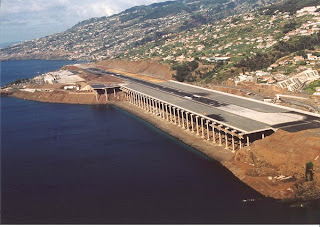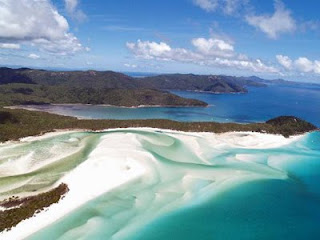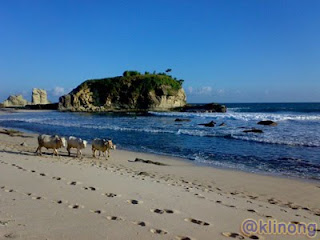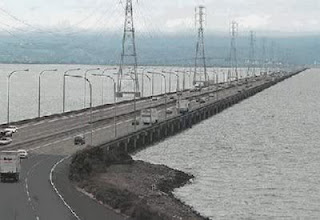The airport was started as a military airstrip in 1942. Was transformed into civil airport in 1943. In 1964 the airport was renovated and relocated, with a new terminal building and control tower. Upgrading facilities in 1985 and 2001.
The airport is named from Juliana of the Netherlands, which is the crown princess when the airport opened. This is the third busiest airport in the Eastern Caribbean, after Luis Muñoz Marín International Airport in San Juan, Puerto Rico and the Las Americas International Airport in Santo Domingo, Dominican Republic. The airport serves as a hub for Windward Islands Airways and is the main gateway for the Leeward Islands is less.

2.Juancho E. Yrausquin Airport (Saba)
This is the only airport on the Caribbean island of Saba, in the Netherlands Antilles. It's well known among experienced fliers for the way to approach or takeoff from the airport.
Some aviation experts from the general opinion that the airport is one of the most dangerous in the world, even though no major tragedies have happened at the facility.
Hazards arise from the physical position of the airport. This is on one side of a hill flanked by high hills, and on the other side and at both ends of the runway by cliffs down to the sea. This creates the possibility that the plane would overshoot a runway during landing or takeoff and end up in the sea or on cliffs.
Though the airport is marked as non-commercial facilities, airlines can land there to get relief from the Netherlands Antilles' Civil Aviation Authority.

3.Courchevel (France)
Courchevel is the name of a ski area located in the Savoie French Alps, and part of Les Trois Vallées, the largest linked ski area in the world. Courchevel has an airport (Airport Courchevel) and highways that connect it with the whole world.
This name chosen for marketing reasons to compete with rival Val d'Isère. Courchevel valley also includes the town of La Tania, built as a competitor accommodation for 1992 Winter Olympics in Albertville. Le Praz hosted the Olympic ski year.

4.Gustaf III Airport (St. Bart)
Gustaf III Airport, also known as Saint Barthélemy Airport or St. Jean Airport (French: Aerodrome de St Jean), is a common use of airport located in the village of St. Jean on the Caribbean island of Saint Barthélemy. Both the airport and main town of Gustavia are named the island to King Gustav III of Sweden, under Swedish island acquired from France in 1785 (it was sold back to France in 1878).
The airport is served by small regional commercial aircraft and charters. Most visiting aircraft carry fewer than twenty passengers, such as the Twin Otter, common sights around Saint Barth and throughout the northern West Indies. The short airstrip is at the bottom of a gentle slope ends directly on the beach. Descendants of arrival is very steep at the top of the hill roundabout and left the aircraft just above the head of sunbathers (although small signs advise sunbathers not to lie directly at the end of the runway). The airport is located on the island's second largest city, St. Jean.
Although the airport has a great reputation to become one of the most dangerous in the world, there have been very few accidents there, most recently on May 23, 2009 when a Piper Aztec ran out of runway on landing and fell on the departure end of Runway 10. There were injuries.

5.Barra International Airport (Barra)
Barra Airport is the only airport in the world where the plane landed on the beach. BRR is situated in the coastal area Traigh Mhor, on Barra island, in the Outer Hebrides, Scotland. If you want to fly here commercially you want to book with British Airways, which flies to Barra from Glasgow and Benbecula.
The airport is completely washed away by the tide once a day, and if you come to the afternoon flight, you might see some cars in the parking lot with their light, which provides pilots some added visibility, the airport is naturally lit. Needless to say you may not want to join at Barra Airport beach, unless you are an addict flight, in which case Barra Airport has a fool proof system, as a sign that read: "Keep away from the coast. When the windsock is flying and the airport is active. "

6.Madeira Airport (Madeira)
Madeira Airport (informally known as Funchal Airport, and formerly known as Santa Catarina Airport), is an international airport located near Funchal, Madeira, Portugal. The airport controls national and international air traffic from the island of Madeira.
The airport was opened on July 18, 1964 with two 1,600 m runways.
The airport was once famous for its short runway, surrounded by high mountains and the sea, making a hard landing for even the most experienced pilots. Original runway is only 1600 feet long, but was extended by 200 meters 8 years after the TAP Air Portugal Flight 425 incident in 1977 and was rebuilt in 2000, almost doubling the size of the runway, building on the ocean. Rather than using a landfill, the extension is built on a series of 180 columns, each about 70m high. The airport is also considered to Kai Tak in Europe as a single approach to the runway

7. Lukla Airport - Nepal
Lukla Airport is a small airport in Lukla town in the Khumbu, eastern Nepal. In January 2008, the government of Nepal announced that the airport be renamed in honor of Sir Edmund Hillary [1] and Sherpa Tenzing Norgay, the first person to reach the summit of Mount Everest. Sir Edmund Hillary died on January 11, 2008. Tenzing Norgay died in 1986. The airport is now officially named Tenzing-Hillary Airport.
Characteristics include runway 527m asphalt runway. 20m wide and sloping ground is a startling 12%. Apron has 4 feet and there is a heli-pad is located 150m below the TWR (tower air traffic control). There are no landing aids are available and the Air Traffic Service is limited to the AFIS (Aerodrome Flight Information Service) only.
The airport is quite popular as Lukla is the place where most people begin their journey to climb Mount Everest.
There are frequent daily flights (ie no night service) between Lukla and Kathmandu, weather permitting. Despite the short flight distance, can easily rain in Lukla while the sun shines in Kathmandu, or vice versa. Siren blast mountain airport personnel to inform the incoming flight. Asphalt paved accessible only by helicopter and small fixed wing takeoff and short landing (STOL) aircraft like Twin Otters or Dornier Do 228. There are about 700 meters (2000 feet) drop at the end of the runway side into the valley below. The airport is contained in the chain fence and guarded by armed police or civilian police Nepal around the clock.










































